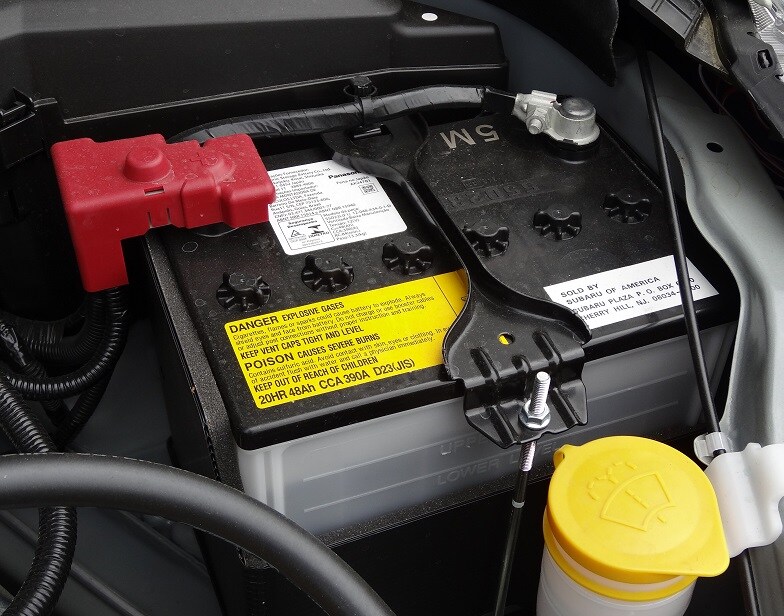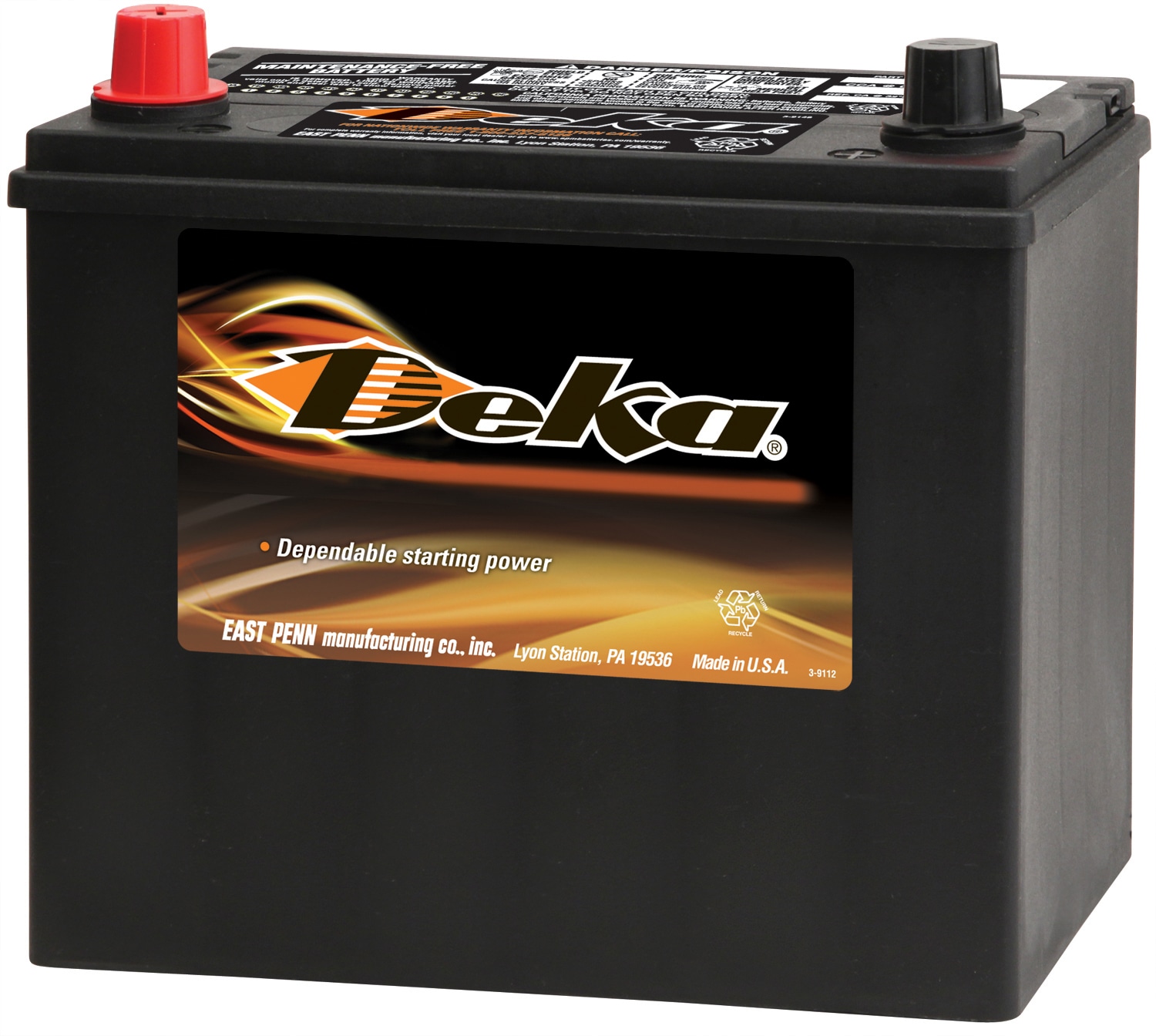The lead acid battery, which includes AGM and the rare actual Gelled electrolyte battery, ideally, always wants to be fully charged, and kept cool.
The Ideal float voltage for any specific battery, is specific to that battery, and its temperature, and to a lesser degree, its state of health, as self discharge can also rise with declining age.
Stories that charging source V, kept battery Y alive, for X years are absolutely meaningless regarding battery Y and charger X, as not are those two variables different, every other variable is too.
Each vehicle will present different parasitic loads to the battery with the engine off, and each vehicle's voltage regulation will be different, and each vehicle owner will use the vehicle differently, which means the time the charging voltage isheld, that the regulator allows, is different as will eb the depth of discharge, and the battery tempertature.
By and large, almost all reports of battery longevity on this forum are simple parroting of brand loyalty, with EastPenn/Deka being the favorite for the last few years, but several years ago Johnson controls was the bitog favorite.
Add to that is so few people ever check the actual voltage any given charger holds, or how much the battery accepts at that voltage, much less for how long the charger holds absorption voltage, or what the actual float voltage is when the charging source reverts from absorption to float, or if it just shuts off and restarts when battery voltage falls to 12.XX.
Most drivers like having an odometer, and a fuel gauge, yet when it comes to batteries, it seems most people are not aware how much gas they have in their tank, the size of their tank, the potential miles per tank, nor their starting point, nor the distance to their destination, much less the time it will take to get there, which is often far longer than they will ever realize, even if they knew their starting point, which they don't, Yet they spew their misinformation as fact.
Get an ammeter, watch how much amperage you battery accepts from your charger at the voltage the charger allows. The battery determines how much amperage it accepts at the voltage reaching the battery terminals, upto the maximum amperage of the charging source.
Or just remain completely ignorant, and wait for that green light to tell you that your battery can start your engine, and someone else with same product to tell you how wise you were to buy the same product they own.
Each and every engine start can be a load test. A voltmeter that can sample voltage several times per second, attached to battery terminals, will show how low battery voltage falls each cold engine start. Warm restarts of fuel injected engines happen so fast that only cold starts really are worthwhile load test.
If voltage falls to the low 8s, but then the battery accepts 65 amps at idle and battery voltage is 13.2, but revving the engine raises amperage to 80+ and voltage climbs into the 14's, says the battery is still healthy, just discharged. In this case, even if the vehicle would hold 14.4 and it be driven to 4 hours, the battery would only get to the 90% state of charge range, and that last 10% could take another 1.5 to 15 more hours, depending on the health of the battery.
But jow blow with chromed ' high output' alternator seems to think a well depleted healthy battery can be fully charged in 15 minutes, because they are so special.
If one starts their cold engine, and voltage falls to low 8's during, but then voltage climbs to 14's and amperage is less than 10 and quickly falling, the battery is severely compromised, and putting it on a charger will not buy much if any more time.
The ampmeter, and the voltmeter, are similar to the odometer ANd speedometer.
Many people can arrive at their destination without either operating, just put some gas in the tank every so often, and claim it works fine.
Others want to know more.
Others think they know more, but are clueless, just loud.
Unfortunately the loudest voice, is often thought to be the wisest, which is yet another sign regarding the sorry state of a failing society/culture.
Put one of these, or one of its many clones, on your plug in charger's DC output leads:
https://www.amazon.com/GT-Power-Analyzer-Consumption-Performance/dp/B00C1BZSYO
It will handle 25 amps continuous, and show voltage, amperage, watt hours, amp hours, minimum voltage and peak wattage and peak amperage. They are imperfect below 0.4 amps, and how imperfect varies among the actual unit/ clone.
I have one of following on the alternator to battery feed+ , and one the (-) battery cable. They are like a permanent DC clamp on ammeter, without the clamp, the cable mush be slid through the ring sensor. The opening is only ~7/8" though.
https://www.amazon.com/bayite-Digit...jbGlja1JlZGlyZWN0JmRvTm90TG9nQ2xpY2s9dHJ1ZQ==
So I get to see how much amperage the alternator is making, and how much of that the battery is accepting vs going to powering loads, like the fuel pump, or lights, or even a cell phone.
I can also adjust the charging voltage of ALL, my charging sources, and seeing how much amperage the battery can accept at different electrical pressure (voltage) is extraordinarily enlightening, not only to the state of charge/ health of a battery, but who is experience free in this regard, and simply parroting incorrect information from someone who never understood it in the first place.
Forums are filled with the latter, on so many topics, that are much more complicated than the charging of lead acid batteries.
It has gotten so much worse, as the experienced, wise and knowledgeable get frustrated and give up, and the parrots that need to hear themselves squawk, are free to do so with no one to spray water at them.
The Ideal float voltage for any specific battery, is specific to that battery, and its temperature, and to a lesser degree, its state of health, as self discharge can also rise with declining age.
Stories that charging source V, kept battery Y alive, for X years are absolutely meaningless regarding battery Y and charger X, as not are those two variables different, every other variable is too.
Each vehicle will present different parasitic loads to the battery with the engine off, and each vehicle's voltage regulation will be different, and each vehicle owner will use the vehicle differently, which means the time the charging voltage isheld, that the regulator allows, is different as will eb the depth of discharge, and the battery tempertature.
By and large, almost all reports of battery longevity on this forum are simple parroting of brand loyalty, with EastPenn/Deka being the favorite for the last few years, but several years ago Johnson controls was the bitog favorite.
Add to that is so few people ever check the actual voltage any given charger holds, or how much the battery accepts at that voltage, much less for how long the charger holds absorption voltage, or what the actual float voltage is when the charging source reverts from absorption to float, or if it just shuts off and restarts when battery voltage falls to 12.XX.
Most drivers like having an odometer, and a fuel gauge, yet when it comes to batteries, it seems most people are not aware how much gas they have in their tank, the size of their tank, the potential miles per tank, nor their starting point, nor the distance to their destination, much less the time it will take to get there, which is often far longer than they will ever realize, even if they knew their starting point, which they don't, Yet they spew their misinformation as fact.
Get an ammeter, watch how much amperage you battery accepts from your charger at the voltage the charger allows. The battery determines how much amperage it accepts at the voltage reaching the battery terminals, upto the maximum amperage of the charging source.
Or just remain completely ignorant, and wait for that green light to tell you that your battery can start your engine, and someone else with same product to tell you how wise you were to buy the same product they own.
Each and every engine start can be a load test. A voltmeter that can sample voltage several times per second, attached to battery terminals, will show how low battery voltage falls each cold engine start. Warm restarts of fuel injected engines happen so fast that only cold starts really are worthwhile load test.
If voltage falls to the low 8s, but then the battery accepts 65 amps at idle and battery voltage is 13.2, but revving the engine raises amperage to 80+ and voltage climbs into the 14's, says the battery is still healthy, just discharged. In this case, even if the vehicle would hold 14.4 and it be driven to 4 hours, the battery would only get to the 90% state of charge range, and that last 10% could take another 1.5 to 15 more hours, depending on the health of the battery.
But jow blow with chromed ' high output' alternator seems to think a well depleted healthy battery can be fully charged in 15 minutes, because they are so special.
If one starts their cold engine, and voltage falls to low 8's during, but then voltage climbs to 14's and amperage is less than 10 and quickly falling, the battery is severely compromised, and putting it on a charger will not buy much if any more time.
The ampmeter, and the voltmeter, are similar to the odometer ANd speedometer.
Many people can arrive at their destination without either operating, just put some gas in the tank every so often, and claim it works fine.
Others want to know more.
Others think they know more, but are clueless, just loud.
Unfortunately the loudest voice, is often thought to be the wisest, which is yet another sign regarding the sorry state of a failing society/culture.
Put one of these, or one of its many clones, on your plug in charger's DC output leads:
https://www.amazon.com/GT-Power-Analyzer-Consumption-Performance/dp/B00C1BZSYO
It will handle 25 amps continuous, and show voltage, amperage, watt hours, amp hours, minimum voltage and peak wattage and peak amperage. They are imperfect below 0.4 amps, and how imperfect varies among the actual unit/ clone.
I have one of following on the alternator to battery feed+ , and one the (-) battery cable. They are like a permanent DC clamp on ammeter, without the clamp, the cable mush be slid through the ring sensor. The opening is only ~7/8" though.
https://www.amazon.com/bayite-Digit...jbGlja1JlZGlyZWN0JmRvTm90TG9nQ2xpY2s9dHJ1ZQ==
So I get to see how much amperage the alternator is making, and how much of that the battery is accepting vs going to powering loads, like the fuel pump, or lights, or even a cell phone.
I can also adjust the charging voltage of ALL, my charging sources, and seeing how much amperage the battery can accept at different electrical pressure (voltage) is extraordinarily enlightening, not only to the state of charge/ health of a battery, but who is experience free in this regard, and simply parroting incorrect information from someone who never understood it in the first place.
Forums are filled with the latter, on so many topics, that are much more complicated than the charging of lead acid batteries.
It has gotten so much worse, as the experienced, wise and knowledgeable get frustrated and give up, and the parrots that need to hear themselves squawk, are free to do so with no one to spray water at them.


